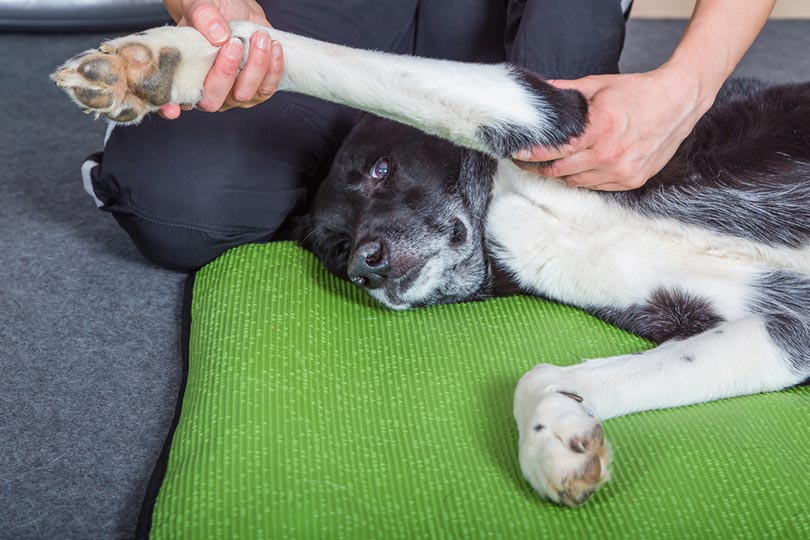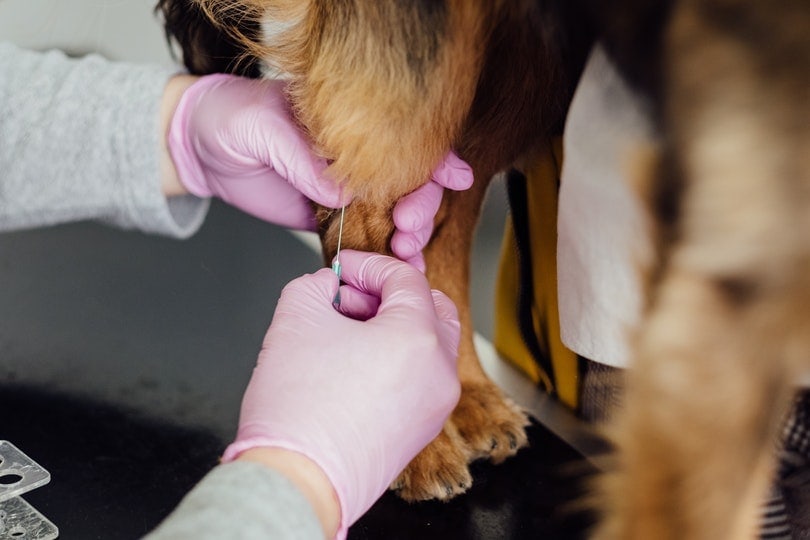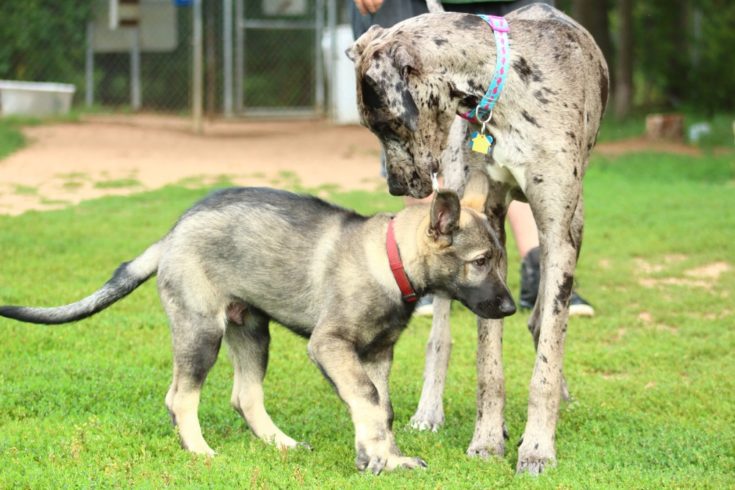How to Prevent Joint Problems and Arthritis in Dogs: 5 Expert Tips

Updated on

Dogs can get arthritis just like humans can. This disease is more common in older dogs and can lead to a lack of mobility and daily pain and discomfort. Arthritis is caused by inflammation in the joints and muscle wasting. It will usually get worse over time if it’s not treated and it can lead to complete stiffness and swollen, painful joints. So how can you prevent joint arthritis problems in your dog? Let’s discuss.
Joint Problems and Arthritis in Dogs
About 25% of the dogs will experience some form of arthritis in their lifetime. In many cases, arthritis in dogs can be perpetuated by obesity and countered with good nutrition and daily activity. And it can also be age-related. Cartilage wears as dogs age, or if the joint mechanics of an injury change, making it less durable. This degenerative process can lead to arthritis because of bone rubbing against bone. It’s painful with each move because the once smooth and thick cartilage has become thinner, making the joint inflamed.
And though you may not always be able to prevent arthritis, there are definitely ways that you can help reduce the inflammation and your dog to stave off arthritis and other age and immune-related diseases. In many cases, it’s helpful to take your dog to the vet to have it diagnosed and started on a treatment plan.

Signs of Arthritis in Dogs
- Weight gain
- Yelps or moans when touched
- Sleeping more than usual
- Loss of appetite
- General lethargy
- Unusual or new posture when walking or running
- Swollen or joint deformities
- Disinterest in physical activity
- Hesitation or reluctance to climb stairs or on furniture
- Trouble sitting up or laying down
- Depression
- Morning joint stiffness
Top 5 Ways To Prevent and Manage Arthritis In Dogs:
1. Medications
You can help your dog cope with arthritic pain with various treatments and prescriptions from your vet.
- Non-steroidal anti-inflammatory drugs (“NSAIDs”)
- Nerve pain medications
- Opioid medications
- Monthly cortisone shots

2. Daily Supplements
Vets will also recommend joint supplements to help your dog’s daily mobility. Supplements help to reduce this inflammation and they come in many different forms.
- Methylsulfonylmethane (MSM) – This compound helps form new cartilage and can reduce pain and inflammation.
- Chondroitin sulfate – Glycosaminoglycans are the building blocks for healthy bone cartilage. They are a popular ingredient in most joint supplements.
- Omega 3 Fatty Acids – Omega fatty acids are often recommended for dogs and have anti-inflammatory properties that are useful in managing arthritis pain.
- Curcumin (Turmeric) – Often used as a supplement for humans, curcumin has been shown to reduce pain and inflammation in arthritis dogs (and humans).
- Hyaluronic Acid – This component of joint fluid is important and makes cartilage more resilient to wear.
3. Get A Canine Chiropractor
Consider going to an experienced canine chiropractor to help your dog deal with its arthritis. While chiropractic adjustments can potentially exacerbate a problem or cause permanent damage if excessive force is applied, they can be very efficacious in helping relieve pain. A chiropractor can evaluate musculoskeletal problems in dogs, reduce stiffness, and improve their overall mobility.

4. Get Doggie Massages
Massage at home can provide relief for your dog and can help you bond with your dog during difficult times in your life. Regular walking or playing active games with your dog can help to strengthen the dog’s limbs. Talk to a licensed veterinarian or a chiropractor before you start walking or exercising with your dog to ensure that the exercise is safe for your pet arthritis.
5. Acupuncture
Acupuncture, another holistic practice, can reduce tension and improves the oxygenation of the dog’s tissues. This relieves pain throughout the dog’s body, not just in the area affected. And if you have pet insurance on your pup, you may want to reach out to them because some providers will cover acupuncture and other therapeutic treatments under their plans.

Wrapping Things Up
Arthritis is a common condition in older dogs, but it can be manageable. And in some cases, its onset can be prevented or delayed with a good diet that helps minimize weight gain and reduce inflammation along with daily physical activity. If you believe that your dog has arthritis, it’s best to take it to the vet for a proper diagnosis and a treatment plan.
The veterinarian may recommend certain supplements, prescriptions, or even physical therapy to help reduce your dog’s discomfort and improve mobility. Supplementation can also help to reduce inflammation, which may improve the dog’s condition.
See also: How to Massage a Dog with Arthritis – Vet Approved Tips
Featured Image Credit: xxxnik, Pixabay













